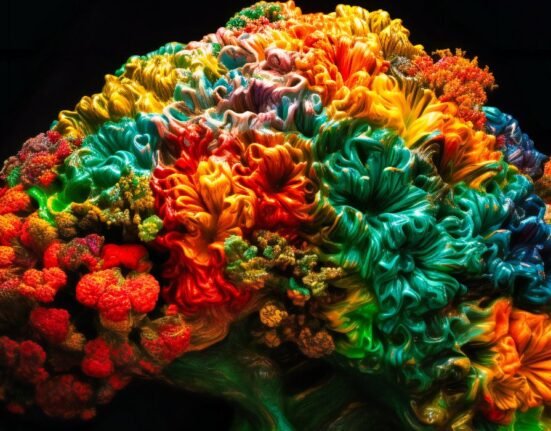When we think of crying, we often have a very vivid image and associated feelings in our mind. It feels as if the world just stopped; everything gets dreary, blurry and looped up in shades of grey; our nose joins our eyes in the struggle; and our heart keeps tripping over itself. Words get stuck in our throat, breath escapes and there is a weight pressing down on us (mostly it’s the diaphragm). And to top it all, our face melts off in a puddle on the floor.
Think of the last time you cried
Tears are mysteriously fascinating. They are conspicuous and their power cannot be denied. Although tearfulness has been reported in a handful of animal species (such as horses, crocodiles, elephants, deer, etc), only humans cry with tears in response to emotional events. Crying is a uniquely human characteristic that forms an indisputable part of the emotional and behavioural repertoire of every healthy human being. We cry in frustration like we cry in elation; we cry when we are overwhelmed with work or emotions (such as anger, fear, sadness or disappointment); we cry during birth like we cry when hurt; we cry out with joy like we cry in grief. While crying may seem like a simple reflex in response to a particular event to a layperson, researchers believe it to be a very complex behaviour that is under the influence of biological, psychological and socio-cultural forces. Gender, age, culture, context, personality characteristics of the crier, mental health, past experiences with crying and subsequent positive or negative response of the observer; all interact with each other in deciding whether an individual will cry in a situation or not. It appears that tears reflect feelings that a person cannot possibly put into words or express in other behaviours. At the most, crying may be the ultimate weapon in our arsenal to emote what evolution, education and modelling has not taught us to express using verbal or sign language.
‘Sometimes a good cry can cure what a good laugh can’t…’
is an often heard phrase.
Is crying actually beneficial?
Emotional crying is described as shedding of tears, in the absence of any irritation of the eyes (or say, onions). Mainly originating from the psychodynamic tradition, crying was considered to be cathartic (help release emotional energy) and healthy. Whereas, inability to shed emotional tears may negatively impact one’s physical functioning. According to a biochemical theory, the lacrimal glands clear the blood and remove stress hormones and other toxic substances that are produced during distress, which would explain why people experience relief after having cried. An international study on crying, containing respondents from 37 countries reported a great consensus among those surveyed (> 70%) that crying generally helps them to feel better. However, this mood improvement after crying may take some time to develop. Sometimes, people cry deliberately such as by focusing on particular memories or modulating facial expressions. They report doing it for their anticipated own personal benefit or relief (rather than to influence the behaviour of others). It is speculated that crying stimulates the release of substances in the body like oxytocin, endorphins, nerve growth factor, etc, all having well-described mood uplifting effects.
Evolution has given crying the status of a survival mechanism. Particularly for helpless babies, it is the most effective means of communication, drawing attention, eliciting support and comfort from the parent or carer. Bowlby and Nelson emphasized that crying is designed to be directed towards important attachment figures, to gain their attention and support. On one hand, it promotes social bonding, social connectedness, inhibits aggression and violence in others. On the other hand, we are all very familiar with the phrase “crocodile tears.” People deliberately use crying to influence and manipulate others to achieve their personal goals also.
In sharp contrast to Charles Darwin who regarded emotional tears as ‘a purposeless phenomenon,’ it can be seen that emotional tears serve important functions, both for the individual’s own mental and physical wellbeing as well as for their interpersonal relationships.
.jpg)
Is crying a female thing?
Despite the fact that not much is understood about why humans cry there is one fact that cannot be disputed: Men cry less frequently, less intensely and for a far shorter duration than women. Vingerhoets, a clinical psychologist at Tilburg University and the author of the book Why Only Humans Weep: Unravelling the Mysteries of Tears, is also one of the few researchers out there currently studying emotional tears. His work across 35 countries in 4 continents suggests that the stereotype about women crying more is true: Women cry 30 to 64 times a year, whereas men cry just 6 to 17 times per year. (Or they say they do, at least. Much of this research relies on self-reporting, which means men could be underreporting how much they tear up). You might be wondering the same thing: how can such a simple act of crying be so different for males and females?
“Several studies over the years have shown that men have larger tear ducts in their eyes, so that it is less likely for the tears to well up to the point of spilling over the eyelid onto the cheek,” said Dr. Geoffrey Goodfellow, an associate professor at the Illinois College of Optometry in Chicago. Testosterones are also believed to inhibit crying.
.jpg)
Socioculturally, Men’s resistance to crying can be traced back to norms about gender and gender roles in our culture. Males are believed to be stronger than females and this belief surpasses the aspects of physical strength. The pressure to conform to the masculine gender role expectations eventually leads them to learn to inhibit their emotions. As infants, boys have been found to express a wider range of emotions than girls. Because of the continuous discouragement of emotional expression due to traditional ideas about ‘masculinity,’ by adolescence boys become so successful at masking their emotions that even their mother find it difficult to identify them. Irrespective of cultural differences in emotional expressions, crying is seen as an acceptable ‘feminine’ behaviour and men are expected to be stoic and unemotional in most situations. What about our attitude and beliefs about what crying implicates? Very often, we have come across people, situations and posts on social media that state crying to be a weakness and something to be ashamed of instead of a positive outlet of emotions. The combination of these gender role expectations and our perception of crying lead us to the fact that because men are expected to not show weaknesses and because we consider crying to be a sign of weakness, we expect men to simply put a lid on it. Rigid gender roles have loosened slightly in recent decades with “sensitive” males becoming more widely accepted, but they are still quite prevalent.
It is shocking that something as simple as crying is made complicated by our culture. Stop and consider this for a moment. Men and women are both humans. They both have weaknesses and strengths. Not allowing either of them the freedom of expressing the most natural emotions, is the worst form of prison control. We need to break the conditioning or stop it in the first place! Given the beneficial effects of crying, it would be safe to assume that crying is, in fact, NOT a weakness. It is actually a sign of mental strength. It’s a sign that you’re human and have feelings beyond what you’re told is appropriate to show in public. It is soul cleansing, mind enriching, and goose-bump inducing, almost acting as drainage for the build-up of negative emotions that result from distress or when you’re dealing with extremely overwhelming emotions.
According to a study conducted by Clinical Psychologist Cord Benecke, a professor at the University of Kassel in Germany, it was found that non-crying people experienced more negative aggressive feelings like rage, anger and disgust, than people who cried. Isn’t this how men express most of their emotions when they’re taught not to cry – through anger? Isn’t that a dangerous thing to teach our boys?
It isn’t only about men, there are women consoling their daughters by saying that ‘You should not cry. You’re strong.
‘Strength does not always lie in our ability to hold back, but also in our ability to know when to let go.
(So go ahead, cry in peace. Just not all the time!)












Leave feedback about this